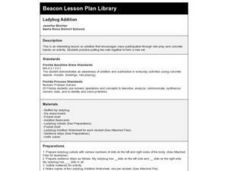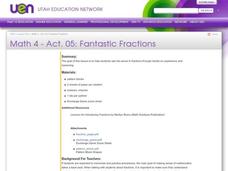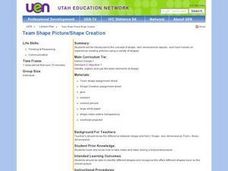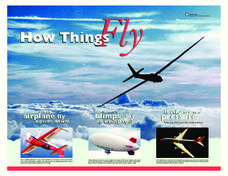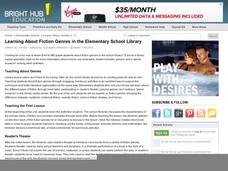Curated OER
Integer War Game
Review adding, subtracting and multiplying integers using this activity. Learners play a game using a deck of cards in which the black ones are positive and the red ones are negative. They add, subtract, etc . . . based on the...
Curated OER
Time to Five Minutes
In this math worksheet, young scholars tell the difference between the hour and minute hands on a clock. They tell the time on four analog clocks to the nearest five minutes.
Curated OER
It's About Time!
Students examine concept of time, and explore difference between analog and digital clocks; students make art project to represent time and create a time-story problem and solution.
Curated OER
Scales, Scutes, and Skins
Students identify the various adaptations of reptiles and amphibians. After distinguishing between reptiles and amphibians, students discuss the ways in which their adaptations aid in their survival. They participate in a hands on...
Curated OER
Integer Subtraction
Students examine why a negative number subtracted from another number changes the operation to addition.
Curated OER
Ladybug Addition
Students engage in an interesting lesson on addition that encourages class participation through role-play and concrete hands-on activity. They utilize the fact that ladybugs have dots on their bodies to create a fun, hands-on lesson in...
Curated OER
Fantastic Fractions
Fourth graders explore and examine through hands-on experience and reasoning the concept of fractions. They solve problems involving multiplication and division of whole numbers and addition and subtraction of simple fractions and decimals.
Curated OER
Team Shape Picture/Shape Creation
Students study the concept of shape--two-dimensional objects--and have hands-on experience creating pictures using a variety of shapes. They identify, explain and use the basic elements of design and recognize the effect different...
Curated OER
Simple Harmonic Motion
Young scholars explore the theory of simple harmonic motion (SHM) by performing hands-on, practical application experiments. In this harmonic motion lesson, students use strings of various lengths and bobs of different weights to create...
Curated OER
Solve Simple One-Step Linear Equation
Sixth graders solve one unknown number by using hands-on manipulatives after being introduced to the history of abstract mathematics through literature.
Curated OER
Not A Drop To Drink
Fifth graders discuss ways that humans pollute our natural water supply. They observe a video about water pollution. Students identify eight different ways water is contaminated. They investigate an oil spill by conducting a hands-on...
Curated OER
Scales, Scutes, and Skins
Students identify the various adaptations of reptiles and amphibians. After distinguishing between reptiles and amphibians, students discuss the ways in which their adaptations aid in their survival. They participate in a hands on...
Curated OER
How Things Fly
Students explain basic principles of aeronautics such as gravity and lift. In this How Things Fly lesson, students visit the interactive, hands-on How Things Fly gallery at the Smithsonian. Students perform three experiments that...
Utah Education Network (UEN)
Add a Quack, Quack Here
The teacher will read-aloud the book Quack and Count and call upon studens to demonstrate various sums of seven. They brainstorm a list of ideas of things that can be combined or added together. They are given unifix cubes to demonstrate...
Curated OER
Learning About Fiction Genres in the Elementary School Library
Teaching about fiction genres can be challenging. The lesson here, designed for library media specialists, offers a fun way to do it. In the lesson, learners visit the library and learn about the different types of fiction through book...
Exploratorium
Thread the Needle
If you are setting up a rotation lab where learners are investigating vision at different stations, this activity can be used to explore depth perception. Setting up a giant needle eye, students attempt to pass a pencil through it with...
Visa
In Trouble
What are some of the financial risks associated with using credit? Pupils learn the warning signs of incurring financial hardship, and through PowerPoint presentations, worksheets, and discussion, discover the implications of such events...
Teach Engineering
Capillarity – Measuring Surface Tension
How do cohesion and adhesion work together? The third installment of a nine-part series teaches young scientists the difference between adhesion and cohesion. They also learn how cohesion and adhesion work together to cause capillary...
Curated OER
Building for the Big One
Students build and test structures that can best withstand earthquakes. They create their structures from playdough, cornstarch, grape-nuts and popsicle sticks and place their structures on a "shake table."
Teach Engineering
May the Force Be With You: Lift
Get the class up and going with a lesson that discusses how airplane wings provide lift. Pupils use their knowledge of Bernoulli's Principle to develop an explanation of how it creates lift on airplane wings.
Teach Engineering
May the Force Be With You: Thrust
Force the plane through the air. The lesson introduces the force on an airplane that makes it go forward. Pupils learn how Newton's laws of motion apply to flight in the eighth segment of a 22-part unit on flight.
Curated OER
Our Solar System - Comparing Planetary Travel Distances
NASA presents a mini-unit on distances in our solar system. It incorporates scientific concepts of gravity, mass, density, and payload while your aspiring astronauts also employ mathematics skills. They calculate speed, they determine...
Teach Engineering
Food Chains and Food Webs - Balance within Natural Systems
Feast on an informative resource. Scholars learn about food chains and food webs and how these interactions give information about the natural community. A PowerPoint presentation provides information about this concept.
Baylor College
Need or Want?
Even as adults it can be hard to distinguish needs from wants. Using pictures of common, everyday items, children make a pocket chart separating the objects they need from those that they want. Discuss their choices, explaining that...







